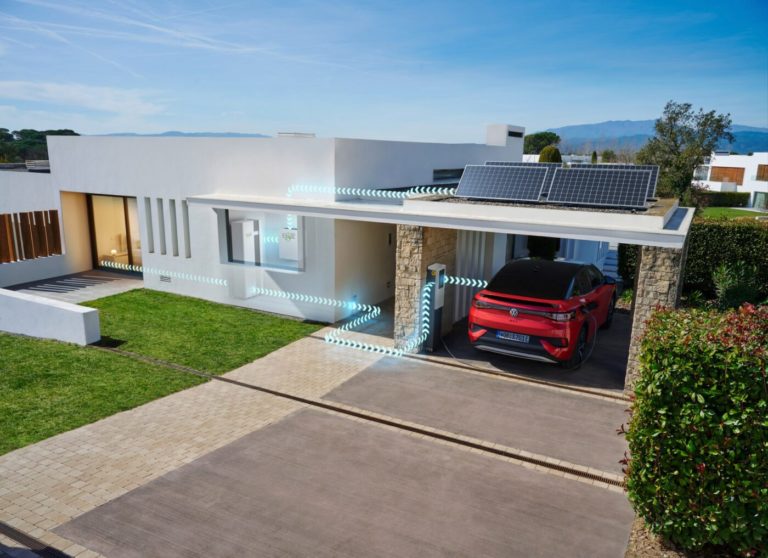VW will also be able to activate the function for vehicles that have already been delivered as soon as they have received the 3.5 software update, according to the Wolfsburg-based company. In the first version, the ID. models in question are only compatible with the S10 E Compact DC home power station from HagerEnergy. Other home power stations are to be enabled for operation with a bidirectional charging station (wall box charging station) at a later date.
The key data in brief: Volkswagen relies on a direct current system with the DC charging standard CCS for bidirectional charging. The basis for bidirectional charging is ISO standard 15118-2, which describes the communication between the electric car and the DC wall box charging station. The car acts as an extension of the home storage system or home power station. “The vehicle is activated by the home power station when the home storage system requires additional energy. As soon as the home storage system is recharged, the vehicle stops transferring energy and goes into standby mode,” writes VW. However, the vehicle’s battery is never discharged below 20 per cent “to ensure constant mobility”.
VW had been announcing the move for a long time. Back in spring 2022, the then VW Board Member for Development, Thomas Ulbrich (now Board Member for New Mobility), said at a press conference that bidirectional charging would come with software 3.1 – at that time, version 3.0 was still being rolled out. “With that, the vehicle can do it. From then on, it depends on the infrastructure,” said the manager at the time. “We as Volkswagen are committed to this future field. But we are also aware that when we go to market with the vehicle, we will have to do pioneering work in the further process in the overall system, right through to legislation.”

Now it is version 3.5 – and for the time being only with the Home Energy Management System (HEMS) from HagerEnergy. Once the update has been installed and the S10 E Compact from HagerEnergy has been installed, the house can be supplied with electricity from the drive battery. Ideally, of course, this should be solar power from your own PV system that has been stored in the vehicle. According to VW, the car can also supply a house with solar power over several cloudy days “thanks to its high storage capacity”. Or even in the evening, when the PV system is no longer supplying electricity. Assuming an average consumption of a house of around 15 kWh per day, the 77 kWh battery can supply it with electricity for around two full days before the lower threshold of 20 per cent charge level is reached.
The system is designed to maximize self-consumption of PV electricity. “Customers can decide for themselves when to draw energy from the public grid and when to draw on the self-produced electricity stored in the vehicle battery,” says VW. In the future, it should also be possible for the vehicle-to-home (V2H) application to become a vehicle-to-grid (V2G) system – and for the car to feed energy into the grid to help stabilize the electricity network.
“We are actively shaping the energy transition with products and services based around the electric car: With the bidirectional charging function now available, we have tailored a new service offering to the needs of our customers,” says Imelda Labbé, Volkswagen Board Member for Sales, Marketing and After Sales. “Not only can they save energy costs, but they also make an important contribution to the sustainable use of energy.”
VW and its partner HagerEnergy have also launched a pilot project in Sweden in which an entire housing estate is being equipped with vehicles and the corresponding charging infrastructure. Specifically, this involves the Stenberg estate in Hudiksvall, Sweden. The farm, which was converted as the basis for the new estate, has been standing for around 350 years. Swedish entrepreneur Klas Boman wants to make the houses future-proof and sustainable for another 350 years through the conversion.
“Stenberg is a once-in-a-lifetime project. When we decided to realise “the other 350-year project”, energy and the environment were key. Every decision was made with these aspects in mind,” explains Boman. “The use of electric vehicles as energy storage was considered from the outset. Thankfully, Volkswagen joined the project in April 2021 and we are now ready to go. This will be one of the biggest changes in the energy market.”


